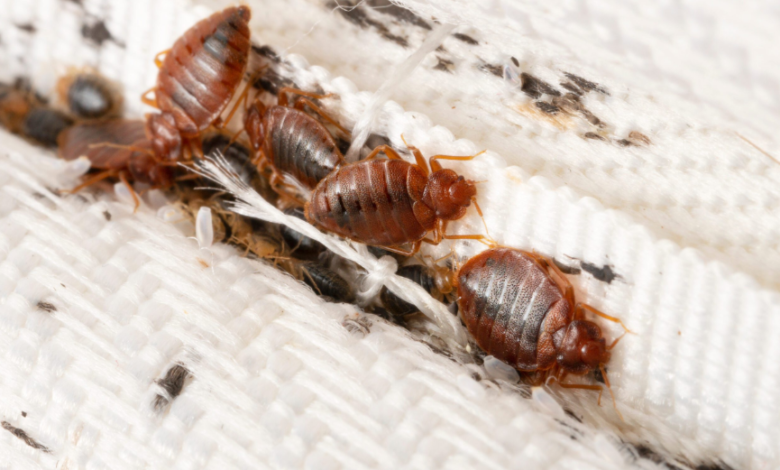How to Identify a Bed Bug Bite: A Complete Guide

Bed bugs are small, parasitic insects that feed on human blood, usually at night. Their bites can cause discomfort, itching, and sometimes allergic reactions. Since bed bug bites resemble those of other insects, identifying them correctly is crucial for proper treatment and pest control.
In this guide, we’ll discuss how to recognize bed bug bites, distinguish them from other insect bites, and provide tips on managing and preventing infestations.
What Do Bed Bug Bites Look Like?
Bed bug bites often appear as small, red, itchy welts on the skin. However, their appearance can vary depending on an individual’s reaction. Here are some common characteristics:
1. Red, Raised Bumps
- Bed bug bites typically appear as small, red, raised bumps, similar to mosquito bites.
- They may develop a darker red spot in the center.
2. Bites in Clusters or Lines
- Unlike mosquito bites, which are often random, bed bug bites usually appear in clusters or straight lines (often called “breakfast, lunch, and dinner” bites).
- This pattern occurs because bed bugs feed multiple times in one area.
3. Itching and Swelling
- The bites can become itchy and mildly swollen.
- Some people may develop a more severe allergic reaction, leading to larger welts or blisters.
4. Common Bite Locations
Bed bugs prefer exposed skin while you sleep. Common bite areas include:
- Arms
- Hands
- Neck
- Face
- Legs
See also: Key Home Services to Keep Your Household Running Smoothly
How to Tell Bed Bug Bites Apart from Other Insect Bites
Since bed bug bites resemble those of mosquitoes, fleas, and spiders, it’s essential to know the differences.
1. Bed Bug Bites vs. Mosquito Bites
- Mosquito bites: Appear as single, random bumps with immediate itching.
- Bed bug bites: Often grouped in lines or clusters, with delayed itching (may take hours or days to appear).
2. Bed Bug Bites vs. Flea Bites
- Flea bites: Usually found around ankles and legs, with a tiny red halo around the bite.
- Bed bug bites: More spread out and often on the upper body.
3. Bed Bug Bites vs. Spider Bites
- Spider bites: Typically single, larger, and may have two puncture marks.
- Bed bug bites: Multiple small bites in a line or cluster.
4. Bed Bug Bites vs. Hives or Allergic Reactions
- Hives: Caused by allergies, not insects; appear as raised, red patches that move or change shape.
- Bed bug bites: Remain in fixed spots and follow a feeding pattern.
Symptoms of Bed Bug Bites
Not everyone reacts the same way to bed bug bites ( væggelus bid ). Some people may have no reaction at all, while others experience:
- Mild to severe itching
- Red, swollen bumps
- Burning sensation
- Small blisters (in rare cases)
- Secondary infections from scratching
If you experience severe swelling, difficulty breathing, or anaphylaxis, seek medical attention immediately, as this could indicate a serious allergic reaction.
How to Confirm a Bed Bug Infestation
Bites alone aren’t enough to confirm bed bugs—you’ll need to look for other signs:
1. Check Your Bedding and Mattress
- Look for tiny blood stains on sheets (from crushed bugs).
- Dark spots (bed bug excrement) on mattresses, sheets, or walls.
- Shed skins or eggshells near hiding spots.
2. Inspect Furniture and Cracks
- Bed bugs hide in mattress seams, headboards, furniture joints, and electrical outlets.
- Use a flashlight to check crevices and folds.
3. Detect a Musty Odor
- A heavy infestation may produce a sweet, musty smell.
4. Use Bed Bug Traps
- Place interceptors under bed legs to catch bugs trying to climb up.
How to Treat Bed Bug Bites
If you’ve been bitten, follow these steps to relieve symptoms and prevent infection:
1. Wash the Affected Area
- Use soap and water to clean bites and reduce infection risk.
2. Apply Anti-Itch Creams
- Hydrocortisone cream or calamine lotion can reduce itching.
- Antihistamines (like Benadryl) help with allergic reactions.
3. Use Cold Compresses
- Apply ice packs to reduce swelling and numb itching.
4. Avoid Scratching
- Scratching can lead to infections—keep nails short and cover bites if necessary.
5. Seek Medical Help if Needed
- If bites become infected (pus, increased redness, fever), see a doctor.
How to Prevent Bed Bug Bites and Infestations
Preventing bed bugs is easier than eliminating them. For more read https://vaeggelus-fri.dk/
Follow these tips:
1. Inspect Hotel Rooms and Luggage
- Check mattresses, headboards, and furniture when traveling.
- Keep luggage off the floor and use protective covers.
2. Wash and Dry Bedding on High Heat
- Heat kills bed bugs—wash sheets, blankets, and clothes at 60°C (140°F).
3. Use Mattress Encasements
- Special bed bug-proof covers trap and starve existing bugs.
4. Declutter Your Home
- Reduce hiding spots by keeping your living space tidy.
5. Hire a Professional Exterminator
- If you have an infestation, professional pest control is the most effective solution.
Myths About Bed Bug Bites
There are many misconceptions about bed bugs. Let’s debunk a few:
❌ Myth: Bed bugs only bite dirty homes.
✅ Fact: They infest any environment—clean or dirty—as long as they have access to blood.
❌ Myth: Bed bugs transmit diseases.
✅ Fact: Unlike mosquitoes, they don’t spread illnesses, but their bites can cause discomfort.
❌ Myth: You can feel bed bugs biting you.
✅ Fact: Their saliva numbs the skin, so most people don’t feel the bites until later.
When to Call a Professional
If you’ve confirmed a bed bug infestation, consider professional extermination because:
- DIY treatments often fail to eliminate all bugs.
- Bed bugs spread quickly and hide in hard-to-reach places.
- Professionals use heat treatments, pesticides, and monitoring techniques for complete eradication.
Final Thoughts
Identifying bed bug bites early can help you take action before an infestation worsens. Look for clustered red bumps, inspect your sleeping area, and take preventive measures. If you suspect bed bugs, act quickly—early detection makes elimination easier.
By following this guide, you can recognize bed bug bites, differentiate them from other insect bites, and take the necessary steps to protect yourself and your home. Stay vigilant, and don’t hesitate to seek professional help if needed!




